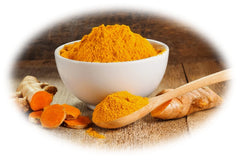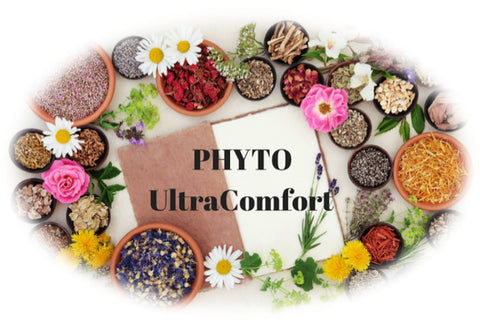There is no an product in your account
please add some product to cart.
Payments to Doctors Could Be Fueling Opioid Epidemic
Posted by John Coppola on 08 Jan, 20
The United States is battling one of its worst drug crises ever reported, Opioid addiction, which has reached epidemic proportions. This epidemic has shown a drastic increase in the use of prescription and non-prescription opioid drugs since 1990.
Over 2 million Americans are estimated to have a problem with opioids. According to the latest survey data, over 97 million people took prescription painkillers in 2015. 12 million of these people used opioid medication without being directed by a doctor.
Research suggests that 20-35% opioid overdose deaths are not being reported. In the case of drug overdoses, many times the specific drug causing the overdose death is never listed on the death certificate.
The most commonly prescribed opioids involved in drug overdoses are oxycodone (OxyContin®), Fentanyl, methadone, and hydrocodone (Vicodin®).
Investigations reveal that the massive increase in opioid sales began with major marketing by pharmaceutical companies aimed at intentionally misinforming doctors’ about the drug’s potential for addiction. The second campaign by major pharmaceutical companies has been to reward doctors financially for prescribing opioids.
According to an analysis by CNN and Harvard researchers, in 2014 and 2015, hundreds of doctors received in excess of $25,000 each from opioid manufacturers. The doctors prescribing the most opioids received the largest payments.
While it’s illegal for doctors to prescribe drugs in exchange for kickback payments from the pharmaceutical company, it is entirely legal for doctors to receive payment for consulting or speaking. This is how the majority of back door paybacks are being made.
Alongside the CNN and Harvard investigation, a study published in August 2017 revealed more than 375,000 opioid-related payments were made to more than 68,000 physicians, totaling more than $46 million dollars in kickback payments. As a result, doctors are one of the leading contributing factors in the rise of opioid use and abuse.

Common Opioids prescribed today include:
- Morphine
- OxyContin (oxycodone)
- Dilaudid (hydromorphone)
- Vicodin, Lorcet, Lortab, Norco
- Perc0cet
- Codeine
- Demerol (meperidine)
- Hydrocodone (Hysingla Er, Zohydro ER)
- Methadone (Dolophine, Methadose)
- Fentanyl (Actiq, Duragesic, Fentora, Abstral, Onsolis)

Safer Alternatives for Pain
Chronic pain affects 1 in 5 Americans. In 2015, the NIH (National Institute of Health) released a study showing that 50 million adults in the U.S. have significant chronic or severe pain, Musculoskeletal pain (pain in the muscles, bones or joints) is the second leading cause of chronic pain. Often this pain occurs in joints like the neck and back but can also occur in the muscles, knees, shoulders, hips, ankles and hands. Another culprit in chronic pain are conditions like Fibromyalgia, Rheumatoid Arthritis, or Osteoarthritis.
The good news for chronic pain sufferers is that you don’t have to take an opioid medication and risk addiction. There are safe and natural alternatives that have been used through the ages, effectively.
Here are some safe alternatives you can use to battle your pain whether it’s acute or chronic.

-
Hemp Oil – Hemp (CBD) oil creates both an anti-inflammatory and painkilling effects that help with chronic pain. In one study published in Therapeutics and Clinical Risk Management, it showed that hemp/CBD oil was effective in people suffering with MS (multiple sclerosis), back pain and overall pain management.
-
 White Willow Bark - Bark from the white willow tree is one of the oldest herbal remedies for pain and inflammation, dating back to ancient Egyptian, Roman, Greek, and Indian civilizations, as an analgesic (pain reliever) and antipyretic (fever reducing) agent.
White Willow Bark - Bark from the white willow tree is one of the oldest herbal remedies for pain and inflammation, dating back to ancient Egyptian, Roman, Greek, and Indian civilizations, as an analgesic (pain reliever) and antipyretic (fever reducing) agent.
The mechanism of action of white willow bark is similar to that of aspirin, Vioxx, Celebrex and Bextra, which is a nonselective inhibitor of COX-1 and COX-2, used to block inflammatory prostaglandins.
Various randomized, placebo-controlled studies comparing white willow bark with non-steroidal anti-inflammatory agents (NSAID’s) have shown the pain inhibiting actions to be comparable.
-
 Turmeric - Curcumin is a naturally occurring yellow pigment derived from turmeric (Curcuma longa), a flowering plant of the ginger family. It has long been used in both Ayurvedic and Chinese medicines as an anti-inflammatory agent, a treatment for digestive disorders, and to enhance wound healing. Several clinical trials have demonstrated curcumin’s antioxidant, anti-inflammatory, and antineoplastic effects.
Turmeric - Curcumin is a naturally occurring yellow pigment derived from turmeric (Curcuma longa), a flowering plant of the ginger family. It has long been used in both Ayurvedic and Chinese medicines as an anti-inflammatory agent, a treatment for digestive disorders, and to enhance wound healing. Several clinical trials have demonstrated curcumin’s antioxidant, anti-inflammatory, and antineoplastic effects.
Curcumin has been proven to be more effective than celecoxib (Celebrex) in treating arthritis pain, for example. It has antioxidant, antiviral, and antifungal properties and it inhibits the function of molecules that play a role in inflammation because it contains high levels of natural pain-relieving COX-2 inhibitors. COX-2 is an enzyme responsible for the formation of prostanoids, (the fatty acids) which mediate inflammatory reactions that occur daily. It’s also effective for local site inflammation from minor injury such as a scrape or cut, and post-surgical inflammation. It is non-toxic to humans, so it comes without the side effects of prescription medications.
-
 Boswellia Serrata - The Boswellia species are trees located in India, Ethiopia, Somalia, and the Arabian Peninsula, and they produce a gum resin called olibanum, better known in the western world as frankincense. This resin possesses anti-inflammatory, anti-arthritic, and analgesic properties. Boswellia can inhibit the leukotriene biosynthesis in neutrophilic granulocytes by inhibiting 5-LOX, thus affecting various inflammatory diseases that are perpetuated by leukotrienes. Clinically, the substance is used in the treatment of degenerative and inflammatory joint disorders.
Boswellia Serrata - The Boswellia species are trees located in India, Ethiopia, Somalia, and the Arabian Peninsula, and they produce a gum resin called olibanum, better known in the western world as frankincense. This resin possesses anti-inflammatory, anti-arthritic, and analgesic properties. Boswellia can inhibit the leukotriene biosynthesis in neutrophilic granulocytes by inhibiting 5-LOX, thus affecting various inflammatory diseases that are perpetuated by leukotrienes. Clinically, the substance is used in the treatment of degenerative and inflammatory joint disorders.
A combination of Boswellia and curcumin showed superior efficacy and tolerability compared with NSAID’s for treating active joint pain.
-
 Devil’s Claw - Native to southern Africa, and introduced to Europe in the early 1900s, this fruit gets its name from the tiny hooks that cover it. Today, devil's claw is used widely in Germany and France to fight inflammation or relieve arthritis pain, headache, and low back pain. Animal and test tube studies suggest that devil's claw can help fight inflammation.
Devil’s Claw - Native to southern Africa, and introduced to Europe in the early 1900s, this fruit gets its name from the tiny hooks that cover it. Today, devil's claw is used widely in Germany and France to fight inflammation or relieve arthritis pain, headache, and low back pain. Animal and test tube studies suggest that devil's claw can help fight inflammation.
Devil’s Claw also has strong Cox-2 inhibiting power making it as effective for pain relief as prescription NSAID’s like, Diclofenac (Arthrotec), Celebrex, Mobic, Relafen.
Phyto UltraComfort* helps reduce occasional, minor pain by supporting healthy enzyme and immune mediator activities.
-
 Fish Oil - Inflammation plays a large role in chronic pain and fish oil has been proven to have strong anti-inflammatory properties. A study publshed In the Surgical Neurology International Journal, revealed that researchers instructed patients with neck or back pain to take 1200 mg of fish oil, daily. After 75 days on the fish oil, more than half of the patients were able to stop taking their prescription pain killers.
Fish Oil - Inflammation plays a large role in chronic pain and fish oil has been proven to have strong anti-inflammatory properties. A study publshed In the Surgical Neurology International Journal, revealed that researchers instructed patients with neck or back pain to take 1200 mg of fish oil, daily. After 75 days on the fish oil, more than half of the patients were able to stop taking their prescription pain killers.
-
 Proteolytic Enzymes - Proteolytic enzymes (or Proteases) such as bromelain (pineapple enzyme), papain (papaya enzyme), pancreatin, chymotrypsin, trypsin, and rutin play a key role in digestion, but did you know they are essential regulators and modulators of the inflammatory response?
Proteolytic Enzymes - Proteolytic enzymes (or Proteases) such as bromelain (pineapple enzyme), papain (papaya enzyme), pancreatin, chymotrypsin, trypsin, and rutin play a key role in digestion, but did you know they are essential regulators and modulators of the inflammatory response?
Italian researchers have shown that the ability of proteolytic enzymes to reduce inflammation is equal to or superior to four powerful steroidal and non-steroidal anti-inflammatory drugs: Phenylbutazone, Hydrocortisone, Indomethacin, and Acetyl Salicylic Acid.
Proteolytic enzymes modulate the inflammatory process by a variety of mechanisms, including reducing the swelling of mucous membranes, decreasing capillary permeability, and dissolving blood clot-forming fibrin deposits and microthrombi.
In order to control pain you can use any of these natural alternatives, but for chronic or severe pain, we’ve found in our clinic that it may take the entire combination of these herbal remedies and enzymes. Let’s face it, not many people will want to go out and purchase 6 different bottles of supplements. In our clinic we use a supplement called Phyto UltraComfort.

This natural pain reliever is safe and effective in dealing with acute or chronic musculoskeletal pain and even pain from neuropathy. This is the number one formula we use for our neuropathy sufferers. For patients with severe pain, we additionally place them on Protease IFC (proteolytic enzymes) in conjunction with the Phyto UltraComfort.
Don’t risk all the horrible side effects that accompany opioid medications, not to mention the risk of addiction. These natural formulas are by far much safer. You owe it to yourself to at least give them a try.











